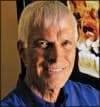by Robert N. Pickron, DDS
 |
| Robert N. Pickron, DDS |
Why don’t we finish on time? The number of patients going beyond the Estimated Completion Date (ECD) naturally increases as a practice grows, with relapses/retreats, overly optimistic or aggressive treatment plans, and short estimated treatment times (not to mention broken appointments, appliance breakage, slow biologic response, or patient cooperation).
The Orthodontist’s Psyche and the Patient’s Psyche
In our orthodontic training, we are taught to treat to predefined skeletal and dental goals that do not necessarily include the wants and desires of the patient. As students, we want to see what is possible without limitations of time or costs. To some of us, not finishing the teeth to a certain occlusion is considered a failure, it doesn’t seem fair to the patient, and seems to be a reflection on our ability and our professionalism. We are not taught to discuss limitations of treatment before treatment, fearing that the patient may feel that we are incapable of the best of care.
In the real world, parents’/patients’ needs and desires are most important. Patients come to us with expectations, knowledge, and previous experiences that shape their reality of what they think is going to happen. There are limitations on the time, cost, and effort that patients are willing to devote.
What are the risks and consequences of not finishing on time? There are serious risks in continuing treatment beyond your ECD, both to the health of the patient and the health of your practice. Risks include liability for unintended outcomes, unexplained compromises, and changes since starting treatment (perio disease, root resorption, decalcification, and decay).
Consequences include patient dissatisfaction with continued treatment without a redefined finish date, a drain on practice profitability, overloading of the schedule with shorter appointment intervals, and poor internal referrals.
What can the orthodontist do? First, you must realize the risks in treating beyond an ECD. You must clearly communicate anything that might cause treatment to be extended and write it in your notes. You must have predefined points to review your goals and the time left to achieve them. You must establish a protocol for patients going over treatment time, and get everyone on board to understand their roles.
When should you remove the braces? 1) When all of your goals have been reached on or before the original ECD. 2) When you have met or exceeded the patient’s expectations at the original ECD. 3) When continuation of treatment has more inherent risks than removal of the braces with compromises. 4) When the patient requests that you remove the braces.
The Doctor’s Promise (to Himself and His Patients)
I promise that I will do everything in my power to finish by the ECD, but if I cannot, I will inform the patient/parent as soon as I notice that treatment is going to be delayed. I will do this in a nonjudgemental way, looking for solutions. I will consult with the patient at the month that it was promised that we would finish, showing the patient what has been accomplished through taking accurate records, and listening to the patient’s desires and concerns. I will offer my best opinion on the options, including braces removal with compromises and a realistic estimate of the additional time to accomplish any new goals agreed upon by the patient. I will give a thorough analysis of the risks of continuing treatment, the likelihood that the goals can be accomplished, and the additional charges to continue, if any. I will send a letter to the dentist.
A Happy Orthodontist
After treating many patients over many years, we learn how to listen and take into account patients’ needs and desires, visualizing compromises that they can and should expect. We establish a practical treatment plan that will exceed the patient’s expectations. We discuss treatment after braces are placed and review our notes to make sure that patients understand what is going to happen and what is not going to happen. We know when and how to discuss compromises, and understand the need to reinforce goals, phrasing questions to find out where we are in the mind of their patient, and therefore where we are in the patient’s treatment.
|
To read more articles by and about Pickron, . |
In my 23 offices, we have a written workflow and an ECD procedure so that doctors and staff understand how to deal with patients at different stages in their treatment. With a good internal policy and training on the importance of the ECD, life as an orthodontist can be more productive, profitable, and enjoyable.
Robert N. Pickron, DDS, is in private practice in Atlanta. He can be reached at










